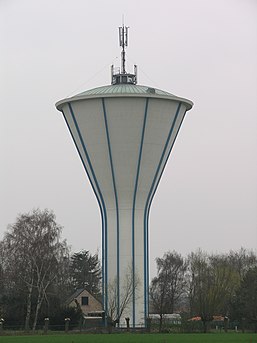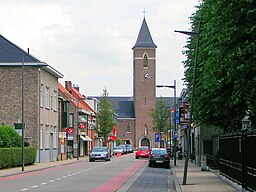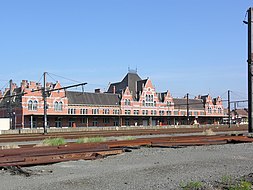Essen, Belgium
Essen (Dutch pronunciation: [ˈɛsə(n)] ⓘ) is a town and municipality in the Belgian province of Antwerp, notable for being bordered by the Netherlands on three sides.
Finds from four different sites indicate that around 8,500 years ago, nomadic tribes roamed the region, making tools like flint arrowheads.
Essen didn't escape the chaos of the 16th century; it was sacked twice—first by Maarten van Rossum's troops in 1542 and then by Marshal Armand de Gontaut-Biron's forces in 1583.
After gaining independence in 1795, Essen adopted the coat of arms of Prelate Hermans, the last abbot of Tongerlo.
The symbols on the coat of arms—two ox heads and a lamb—reflect both the town's agricultural heritage and its virtues of steadfastness and patience.
After the defeat of Napoleon in 1815, Essen became part of the United Kingdom of the Netherlands, under the rule of William I of Orange-Nassau.
However, when the Southern Netherlands seceded to form present-day Belgium in 1830, Essen's geopolitical status shifted, turning it into a border town.
This transition was marked by significant military conflict, most notably the Battle of Essen on 21 November 1830, during the Belgian War of Independence.
Tensions escalated further on 20 November 1831, when these soldiers moved to Roosendaal, inciting a strong Dutch military response the following day.
In an agreement signed on 9 July 1852, Belgium and the Netherlands paved the way for a new railroad connecting Antwerp and Rotterdam.
Constructed between 1852 and 1854, the Antwerp-Lage Zwaluwe rail line included a key border station in Essen.
Interestingly, the line bypassed the city of Breda, a decision influenced by one of the founding members of the Société Anonyme des chemins de fer d'Anvers à Rotterdam, who owned land in Essen.
The introduction of the railway accelerated Essen's development, creating numerous job opportunities and establishing the station as a mandatory stop for international trains.
In the contemporary setting, the station offers an Intercity (IC) connection to Antwerp and Brussels-Midi, along with a local train service to Roosendaal.
In 1959, a new customs office rose on Nieuwstraat, the very site where the O.-L.-V. Geboortekerk (Church of the Nativity) once stood before its destruction in World War II.
Essen claimed the title of second-busiest road office on the Belgian-Dutch border, right behind Wuustwezel, until it shuttered on 1 January 1993.
This unique geographic status, shared only with Momignies, means Essen borders just one other Belgian municipality.
Geographically, Essen's shape resembles a "hump," positioning it as the most northwestern municipality in the Kempen region and the northernmost in Noorderkempen.
Famous people who were born or live in Essen or have other significant links with the municipality: Horendonk, Nispen, Essen-Hoek, Wildert, Nieuwmoer




